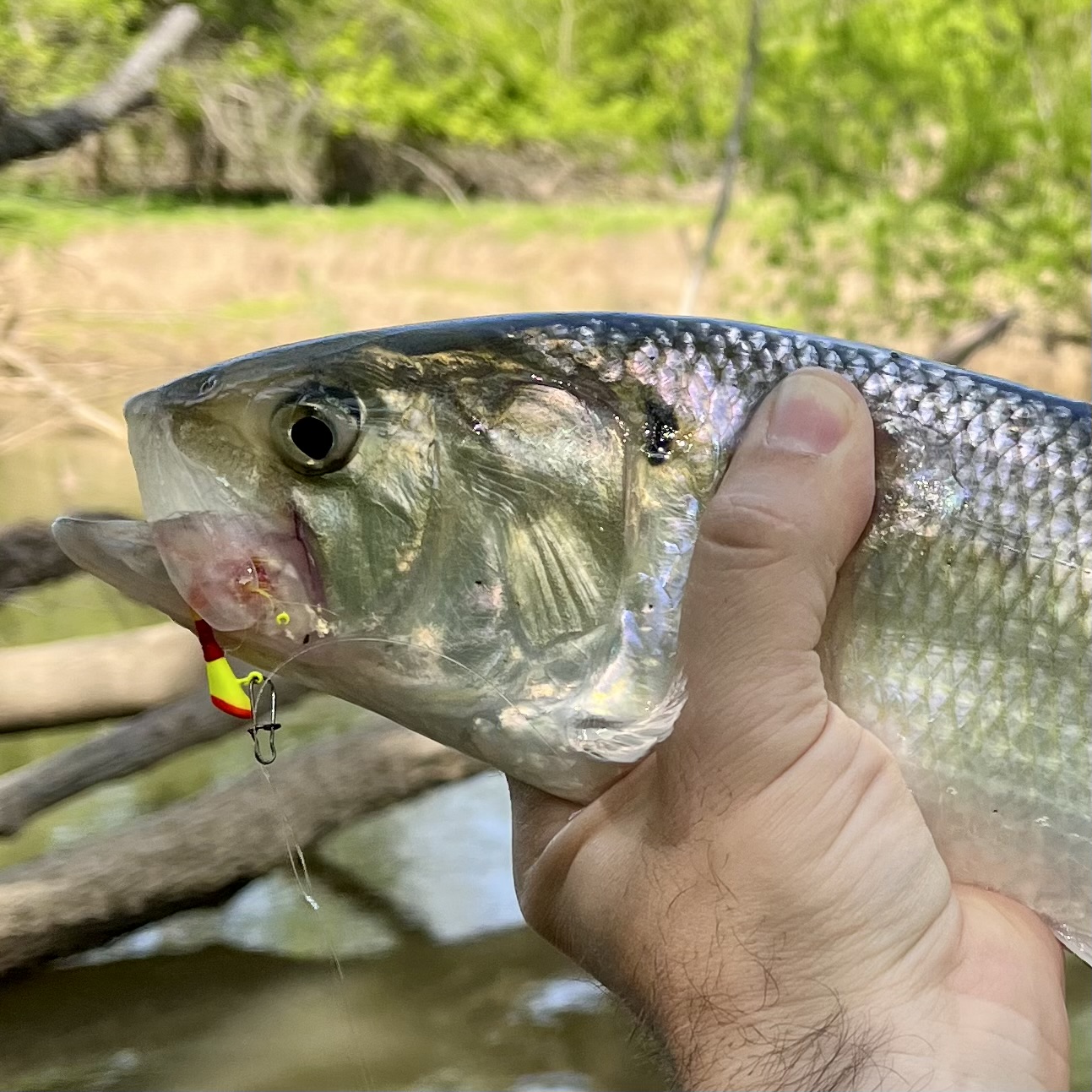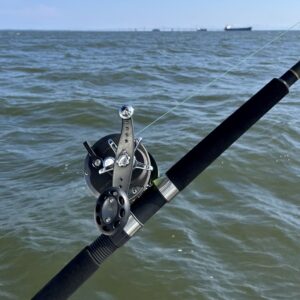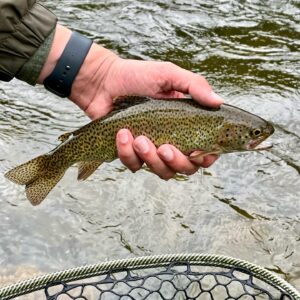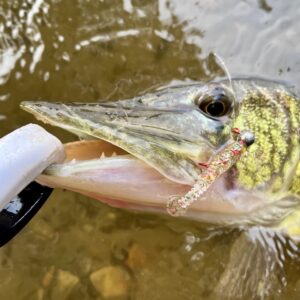Welcome to the Weekly Creel, a compilation of regional news and announcements for anglers and outdoor enthusiasts of the Chesapeake Bay region. Please email us directly at editor@reelchesapeake.com to have your organization’s news item or event listing considered for next week’s column. Per usual, here are direct links to the lastest, local fishing reports from Reel Chesapeake, On The Water, Maryland Department of Natural Resources, Anglers Sports Center, and FishTalk Magazine. The leading photograph (above): Severn River sunrise, photographed on October 1st by yours truly.
Striper ’23 Young-of-Year Index is Dismal
It may not come as a surprise, but it certainly is maddening—the Maryland Department of Natural Resources announced the 2023 Striped Bass Young-of-Year Index is 1.0, far below the 11.1 long-term average. In fact, it’s nearly the worst annual index recorded since the 1954 survey. This means striped bass haven’t been spawning at a sustainable rate, good enough to support the fishery we hold so dear to our angling hearts.
“The warm, dry conditions in winter and spring during the past several years have not been conducive to the successful reproduction of fish that migrate to fresh water for spawning,” DNR’s Fisheries and Boating Director Lynn Fegley said.
While that statement may be true, I believe it is also true that the species is overfished in the Chesapeake Bay, primarily due to financially-motivated regulations that allow for unsustainable harvesting by both commercial and recreational fishermen. On the rec side of things, the Atlantic States Marine Fisheries Council initiated and maximum slot size for keeper bass of 31″ up and down the entire Atlantic seaboard this season, including the Chesapeake. Adopted by every East Coast state, this new regulation is certainly a step in the right direction toward saving the stripers.
But if you’re a die-hard angler who appreciates the species, then you know what Maryland needs to do—abolish the trophy striped bass season. Be done with it. The state has already taken the entire month of April off our fishing calendars with regards to targeting striped bass. Let’s add May. It makes zero sense to allow the harvesting of the large, breeding fish during May. At the very least, the states (let’s include Virginia), should adopt the slot max during May. Third option: extend the catch-and-release only season through May (include April).
Certainly, there’s much more to discuss and options aplenty—including addressing commercial quotas, practices, etc.—and we expect to continue the conversation. Stay tuned.
Lefty Kreh Sculpture Unveiling Today
And now for some good news. Legendary angler and world-wide fly fishing ambassador Lefty Kreh will be honored today at Culler Lake in Baker Park, Frederick, Maryland, with the unveiling of a larger-than-life bronze sculpture, beginning at 10 a.m.
Kreh, of course, was as local a legend as they come. Born in Frederick in 1925, he would catapult the sport of fly fishing by pioneering the pursuit in saltwater. He lived nine decades, fishing his entire life, as well as teaching the sport, authoring books and outdoors columns, and creating flies. His “Lefty’s Deceiver” is one of the most famous flies of all time.
Join the Friends of Lefty Kreh for brief remarks from community leaders and friends of Kreh, followed by the sculpture unveiling with artist Toby Mendez. For more information, friendsofleftykreh.com.
Oysters Aplenty!
Maryland is staking (re)claim to being an oyster state. This week, Governor Wes Moore announced that more than 1.7 billion new juvenile oysters have been planted on sanctuary and public oyster fishery sites in Maryland’s Chesapeake Bay this year, surpassing an ambitious 2023 planting goal and setting a new annual record. The milestone means that the state has planted almost 7 billion oysters since launching its large-scale oyster restoration strategy in 2014 with the help of numerous partners.
“Planting 1.7 billion oysters this year shows the success of the broad partnership of watermen, scientists, academics, nonprofits, and state and federal government officials dedicated to this vital natural resource and economic driver for Maryland,” Gov. Moore said.
Of the 1.7 billion oysters planted so far this year, 1.03 billion were planted in oyster sanctuaries targeted by the state for large-scale restoration; 112.61 million were planted in smaller sanctuaries in Anne Arundel and Queen Anne’s County; 212.4 million were planted in the Eastern Bay region sanctuaries for the Department of Natural Resource’s Eastern Bay Project; and 455.25 million have been planted on public oyster grounds throughout the state. Learn more about the programs and science at dnr.maryland.gov, oysterrecovery.org, and umces.edu. Photograph of oyster clump from St. Mary’s River reef, courtesy Oyster Recovery Partnership.
Recreational Fishing Alliance Disolves
After 27 years of representing anglers nationwide, the Recreational Fishing Alliance (RFA) is officially disolving and redirecting all resources to the American Sportfishing Association (ASA), producers of the annual ICast expo. The RFA was a national, 501(c)(4) nonprofit, grassroots political action organization that represented individual sport fishermen and the sport fishing industry since 1996. The ASA celebrtated it’s 90th anniversary this year. Both organizations missions on are built on the foundation of building a better sportfishing community through advocacy, education, partnerships, visibility, and special events.
“We are confident that the original purpose and mission of the organization will continue to be carried out,” said Robert Healey Jr., chairman of the RFA board.
“We greatly appreciate the hard work of the RFA and welcome its support of the ASA,” ASA President Glenn Hughes said.
RFK Stadium Demolition Assessment on Environment
The National Park Service (NPS) is seeking public comments on the environmental assessment (EA) for the demolition of the Robert F. Kennedy Memorial Stadium (RFK Stadium). This EA looks at the impacts that would occur from the NPS authorizing the District of Columbia, through Events DC, to demolish RFK Stadium. The public is invited to review the EA and share comments through November 9th.
RFK Stadium is located on land administrated by the NPS as part of Anacostia Park—therefore the NPS conducted an EA to evaluate the D.C. landscape and air quality impacts of demolition to park land. However, the District of Columbia owns the stadium, and Washington Convention and Sports Authority (Events DC) is responsible for its operation and management. The stadium, which opened in 1961, is vacant and has not been used as a sports and entertainment venue since 2019 and is not open to the public.
To provide comments online or get additional information on the project, visit ParkPlanning – Robert F. Kennedy Memorial Stadium Demolition (nps.gov).
Good News for Migratory Fish in U.S. Waters
The U.S. Fish and Wildlife Service today announced the availability of up to $36 million through President Biden’s Investing in America agenda for fish passage projects across the nation that address outdated, unsafe or obsolete dams, culverts, levees and other barriers fragmenting our nation’s rivers and streams. Since 2022, the Bipartisan Infrastructure Law has invested $73 million in 79 projects through the Service’s National Fish Passage Program. These funds are investing in our nation’s infrastructure and natural resources by reconnecting fragmented rivers, improving fish migration, and enhancing local economies.
The National Fish Passage Program has decades of proven experience implementing infrastructure projects with partners on a voluntary basis to improve the health of the nation’s waterways, reconnect rivers, improve climate resilience and enhance local economies. The program provides financial, technical and planning assistance to Tribes, communities, other agencies and landowners to help remove barriers and restore rivers for the benefit of fish and people.
Interested parties should submit a Letter of Interest to the appropriate National Fish Passage Program regional coordinator, via email, by November 17th, 2023. Letters of Interest should include the project name and location, a brief description of the project objectives and benefits, the expected requested funding amount, and a statement of interest in applying for the funding opportunity.
And that’s a wrap for this week’s Creel. If you have news to share, please send an email to editor@reelchesapeake.com.









